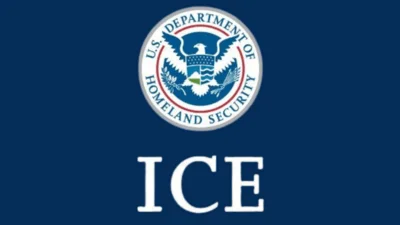Washington, D.C.- President George W. Bush's fiscal year (FY) 2009 budget proposal submitted today to Congress for the Commerce Department's National Institute of Standards and Technology (NIST) includes $634 million for core research and facilities programs, a 22 percent increase (excluding congressionally directed grants) over the FY 2008 appropriations for these programs.
"The President's request focuses on high-impact research that will both address critical national needs and spur economic growth by advancing innovation and industrial competitiveness," said James M. Turner, acting director of NIST. "This budget continues the Administration's commitment to work toward a doubling of NIST's core budget by 2016 as called for in the President's American Competitiveness Initiative and authorized through 2010 by the America COMPETES Act."
"This budget also reflects some difficult decisions about priorities and reflects the President's guidance to restrain spending," Turner continued. "The request for the Hollings Manufacturing Extension Partnership is $4 million, enough for an orderly end to federal funding for the program, while no funds are requested for the Technology Innovation Program."
The total request of $638 million for NIST is divided into three appropriations:
Scientific and Technical Research and Services (STRS), $535 million-This category includes $526.5 million for NIST laboratory research and $8.5 million for the Baldrige National Quality Program.
Major components of the FY 2009 request include four new initiatives in the following areas:
* Nanotechnology: Environment, Health and Safety Measurements & Standards (+$12 million)
* Measurements and Standards to Accelerate Innovation in the Biosciences (+$10 million)
* Comprehensive National Cyber Security Initiative: Leap-Ahead Security Technologies (+$5 million)
* Going at Light Speed: Optical Communications and Computing (+$5.8 million)
* In addition, the request includes 10 initiatives previously described in the FY 2008 budget:
** NIST Center for Neutron Research Expansion and Reliability Improvements (+$2 million, added in FY 2009 to a previously funded initiative)
** Quantum Information Science/Enabling Innovation through Quantum Science (+$7 million)
** Enabling Nanotechnology from Discovery to Manufacture (+$7 million)
** Measurements and Standards for the Climate Change Science Program (+$5 million)
** Innovations in Measurement Science (+$3 million)
** National Earthquake Hazards Reduction Program (+$3.3 million)
** Disaster Resilient Structures and Communities (+$4 million)
** Enabling the Use of Hydrogen as a Fuel (+$4 million)
** Biometrics: Identifying Friend or Foe (+$2 million)
** Manufacturing Innovation through Supply Chain Integration (+$1 million)
* Construction of Research Facilities (CRF), $99 million-This category includes $37.3 million in funding for operational maintenance, major repairs and safety of the NIST sites; and $61.7 million for three initiatives to:
** Perform a limited expansion of JILA, a joint institute of the University of Colorado and NIST, which has produced three Nobel Laureates and two MacArthur Fellows in the last decade. A top training ground for scientists, JILA is suffering from severe overcrowding. The funding will add 4,610 square meters (49,600 square feet) of new office and laboratory space. It will enable existing JILA staff to train one-third more postdocs and student researchers. Because JILA already produces 5 to 10 percent of all Ph.D.s in atomic, molecular and optical physics in the United States each year, the expansion will significantly enhance the nation's production of scientists in this frontier research field. (+$13 million)
** Complete state-of-the-art laboratory space at NIST's Boulder, Colo., campus, through the extension of Building 1 at the facility. The Building 1 Extension (B1E) will provide the environmental control needed to reliably measure and manipulate atomic-scale phenomena in order to further enable 21st-century technologies that will utilize quantum properties, nanotechnology and other advances that support broad industry sectors and our economy. (+$43.5 million)
** Conduct major repairs. This initiative provides additional base funding in support of NIST's Safety, Capacity, Maintenance and Major Repairs (SCMMR) program. This additional funding will help decrease the deferred maintenance backlog at NIST. (+$5.2 million)
*
Industrial Technology Services (ITS), $4 million- The requested $4 million provides the orderly end to federal funding for the Hollings Manufacturing Extension Partnership (MEP) program. The FY 2009 budget does not request funds for the Technology Innovation Program (TIP).
NOTE: Additional information on NIST's budget is available at www.nist.gov/public_affairs/budget.htm.









